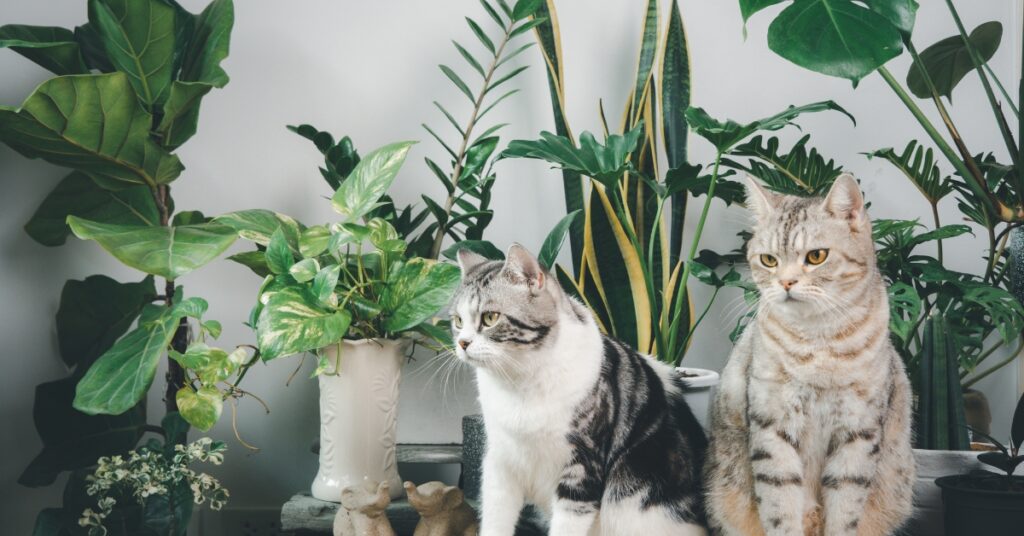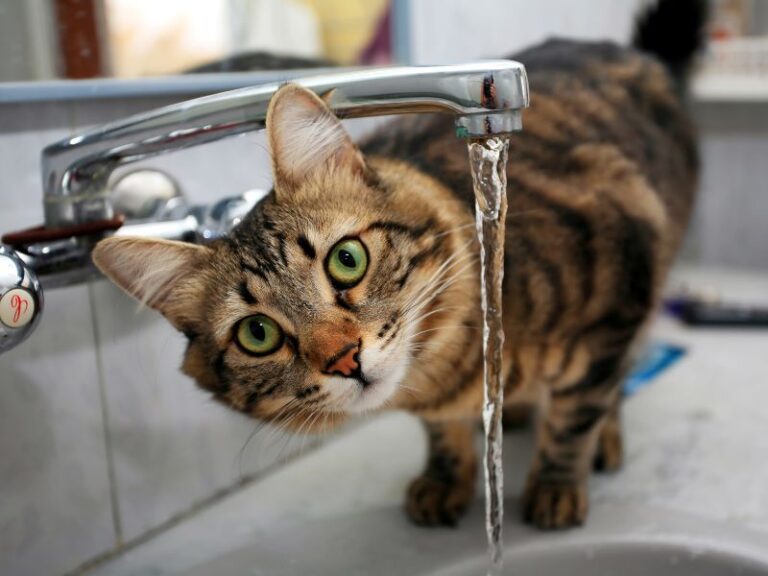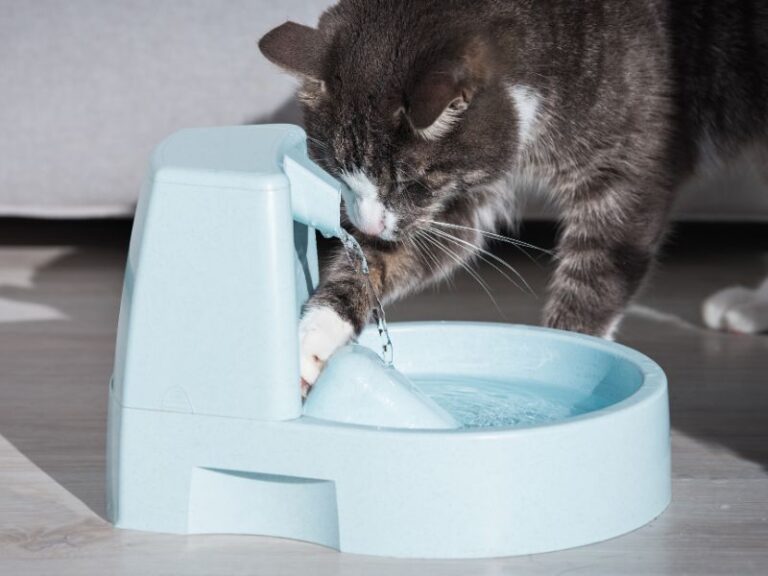Table of Contents
ToggleIn recent years, there has been a growing trend of cat lovers embracing the concept of cat-friendly houseplants. These green additions to indoor spaces not only bring a touch of nature’s beauty but also create a safe and enriching environment for our feline companions. As more pet owners recognize the benefits of having cat-friendly houseplants, it’s essential to explore how these green wonders can positively impact both cats and their human caregivers.
With the rise of urban living and limited access to outdoor spaces, many cat owners have sought ways to introduce elements of nature into their homes. Cat-friendly houseplants have emerged as an excellent solution, allowing indoor cats to experience the sights, scents, and textures of the natural world without exposing them to potential outdoor dangers.
Indoor environments can sometimes lack the diversity and sensory stimulation that outdoor spaces offer. Cat-friendly houseplants provide an opportunity to create an engaging and enriching indoor environment for our feline friends. From the soft rustling of leaves to the appeal of exploring new green territories, these plants offer a sensory adventure that can keep cats mentally and physically active.
Benefits of Cat-friendly Houseplants
Cat-friendly houseplants offer a plethora of advantages that go beyond just adding a touch of green to your home decor. Let’s explore how these plants can bring a breath of fresh air, enhance your living space, and provide endless moments of joy and stimulation for your beloved feline companions.
Improving Indoor Air Quality for Both Cats and Humans
Indoor air quality is a crucial factor in maintaining a healthy living environment for both cats and humans. Many common household items, such as cleaning products and synthetic materials, can release harmful chemicals into the air. Cat-friendly houseplants act as natural air purifiers, effectively filtering out pollutants and toxins and releasing clean oxygen into the surroundings.
Studies have shown that certain houseplants, like the Spider Plant (Chlorophytum comosum) and the Areca Palm (Dypsis lutescens), can remove harmful substances such as formaldehyde, benzene, and ammonia from the air. By having these green companions in your home, you can create a safer and more breathable atmosphere for everyone, promoting better respiratory health for both you and your feline friends.
Enhancing the Aesthetics of Your Living Space
One cannot deny the aesthetic appeal of lush, green houseplants adorning the living space. Cat-friendly houseplants not only add a touch of natural beauty but also create a calming and visually pleasing ambiance. These plants come in various shapes, sizes, and colors, allowing you to curate your indoor garden to match your unique taste and decor style.
Whether you opt for the delicate fronds of a Boston Fern (Nephrolepis exaltata) or the vibrant flowers of an African Violet (Saintpaulia spp.), cat-friendly houseplants effortlessly elevate the overall aesthetics of your home. Additionally, the presence of these green beauties can impart a sense of tranquility and relaxation, benefiting both you and your feline companions.
Providing Enrichment and Mental Stimulation for Cats
Cats are natural explorers and hunters, and the introduction of cat-friendly houseplants can awaken their innate curiosity and keep them mentally engaged. Watching a plant sway in the breeze or playfully batting at dangling leaves can offer endless entertainment for your feline friends.
Cat-friendly houseplants also provide an opportunity for sensory stimulation, allowing cats to experience different textures, scents, and tastes. Cat Grass (Dactylis glomerata) is a popular choice, as its tender blades satisfy cats’ urge to chew on grass, which can aid in digestion and provide a source of enrichment.
Additionally, the presence of houseplants can reduce boredom and stress in cats, especially for those who spend most of their time indoors. As they interact with their green companions, cats engage in physical activity and mental exercises, contributing to their overall well-being and happiness.

Choosing the Right Cat-friendly Houseplants
When it comes to incorporating houseplants into a cat-friendly environment, it’s crucial to make informed choices to ensure the safety and well-being of your feline friends. Let’s explore the factors to consider when selecting the perfect cat-safe houseplants that align with your cat’s behavior and your level of plant-care experience.
Non-toxic and Pet-safe Plant Selection
The first and foremost consideration when choosing cat-friendly houseplants is to opt for non-toxic varieties. Some plants, although beautiful, can be harmful or even poisonous to cats if ingested. To keep your curious companions safe, avoid plants such as lilies, azaleas, and philodendrons, which are known to be toxic to cats.
Instead, opt for pet-safe options like the Spider Plant (Chlorophytum comosum), Boston Fern (Nephrolepis exaltata), and Cat Grass (Dactylis glomerata), which are not only non-toxic but also offer various health benefits for your cats.
Considering Your Cat’s Chewing and Scratching Habits
Cats are notorious for their chewing and scratching habits. When selecting cat-friendly houseplants, take into account your cat’s tendencies. Some cats may be more prone to nibble on leaves or explore the texture of the plant, so it’s essential to choose sturdy plants that can withstand a bit of feline curiosity.
Avoid plants with sharp thorns or spiky leaves that could potentially harm your cat. Opt for plants with soft and non-toxic foliage that won’t pose a danger if your cat decides to investigate.
Low-maintenance and Hardy Varieties for Beginner Plant Parents
If you’re new to plant care, selecting low-maintenance and hardy varieties is a wise choice. Some cat-friendly houseplants are more forgiving when it comes to watering and general upkeep, making them ideal for beginner plant parents.
Hardy plants like the Areca Palm (Dypsis lutescens) and the Parlor Palm (Chamaedorea elegans) are not only safe for cats but also relatively easy to care for. They can thrive in various light conditions and are more tolerant of occasional neglect.
By considering your cat’s behavior and your level of experience with plants, you can choose cat-friendly houseplants that not only enrich your living space but also offer a safe and worry-free environment for your feline companions.

8 Cat-friendly Houseplants and Their Charms
Now that we’ve explored the benefits of cat-friendly houseplants and what to consider when choosing them, let’s dive into eight delightful options that are not only safe for your feline companions but also come with their unique charms.

- Spider Plant (Chlorophytum comosum)
The Spider Plant is a popular choice among cat owners due to its non-toxic nature and air-purifying abilities. Its long, arching leaves with white stripes add an elegant touch to any indoor space. Cats often find the Spider Plant’s foliage intriguing, making it a source of entertainment as they bat at the long, slender leaves.

- Boston Fern (Nephrolepis exaltata)
The lush and feathery fronds of the Boston Fern make it a favorite among cat-friendly houseplants. Its soft and non-toxic foliage invites cats to explore and perhaps even nap among its verdant branches. Regular misting will keep this tropical beauty happy and thriving.

- Areca Palm (Dypsis lutescens)
The Areca Palm, also known as the Butterfly Palm, boasts graceful, feathery fronds that create a tropical oasis in your home. This non-toxic plant is safe for cats and helps improve indoor air quality by filtering out harmful pollutants. Its gentle swaying leaves mimic the outdoor breeze, captivating cats with their soothing movements.

- Cat Grass (Dactylis glomerata)
Cat Grass is a purr-fect addition to any cat-friendly household. This edible grass provides essential nutrients for your feline friend and satisfies their natural urge to chew on greens. Growing cat grass in a designated pot or planter gives your cat their private little grazing area, reducing the risk of them munching on other household plants.

- Calathea (Calathea spp.)
Calatheas, also known as Prayer Plants, showcase exquisite and artistically patterned leaves that captivate both cat owners and their feline companions. Non-toxic and available in various stunning varieties, Calatheas add a touch of elegance to your home while providing a safe and stimulating environment for your cat.

- Peperomia (Peperomia spp.)
Peperomias come in a wide array of shapes and textures, making them an intriguing choice for both plant enthusiasts and curious cats. Their small and sturdy leaves are perfect for cats who enjoy sniffing and investigating without causing any damage. With Peperomias, you can enjoy an attractive display without worrying about your cat’s safety.

- Parlor Palm (Chamaedorea elegans)
The Parlor Palm is a petite and charming plant that fits perfectly on shelves or tables. Its delicate fronds create a lush and tropical atmosphere, enticing cats to explore its gentle foliage. Non-toxic and easy to care for, the Parlor Palm is an excellent choice for busy cat owners.

- African Violet (Saintpaulia spp.)
The African Violet is a delightful flowering plant that adds a splash of color to your indoor garden. With its bright and cheerful blooms, it can lift anyone’s spirits—including your cat’s. Non-toxic and compact, African Violets are ideal for adding a pop of color to smaller living spaces.
Caring for Cat-friendly Houseplants
Having chosen the perfect cat-friendly houseplants for your home, it’s essential to provide them with the proper care and attention they deserve. Ensuring the well-being of your green companions will not only keep them thriving but also create a harmonious environment for your cats to enjoy. Let’s explore the essential aspects of caring for your cat-friendly houseplants.
Proper Placement and Lighting
Placing your cat-friendly houseplants in the right spot is vital for their growth and well-being. Consider the specific lighting needs of each plant when deciding where to position them. Some plants prefer bright, indirect light, while others thrive in low-light conditions. Observe the natural light patterns in your home and position the plants accordingly.
Cat-friendly houseplants like the Areca Palm and Boston Fern prefer indirect light, making them suitable for areas with filtered sunlight or away from direct windows. On the other hand, the Spider Plant and African Violet can tolerate brighter light but should still be shielded from harsh, direct sunlight.
Watering and Humidity Needs
Proper watering is crucial for the health of your cat-friendly houseplants. Overwatering can lead to root rot, while underwatering can cause stress and wilting. Each plant has its own water requirements, so it’s essential to research and understand the specific needs of your green companions.
Before watering, check the soil moisture by gently sticking your finger into the soil. If it feels dry about an inch below the surface, it’s time to water. Ensure that your plant’s pot has drainage holes to prevent water from pooling at the roots.
In addition to watering, some cat-friendly houseplants appreciate higher humidity levels. Misting the leaves or placing a humidifier nearby can help create a more favorable environment for these plants.
Tips for Cat-proofing Your Plants
While cat-friendly houseplants are non-toxic, it’s still essential to take precautions to keep both your plants and cats safe. Some cats may still be tempted to nibble on leaves or play with dangling foliage. To cat-proof your plants:
- Elevate the Plants: Place your plants on tall shelves or plant stands that are out of your cat’s reach.
- Use Planters with Heavy Bases: Choose planters with sturdy and weighted bases to prevent cats from knocking them over.
- Avoid Toxic Decorations: Refrain from using toxic materials like fertilizer or chemical treatments in your plant care routine.
- Offer Alternatives: Provide cat grass or catnip to satisfy your cat’s need to chew on greens.
- Create a Safe Play Zone: Designate an area with cat-friendly toys and distractions to redirect your cat’s attention away from the plants.

Caution: Plants to Avoid Around Cats
While cat-friendly houseplants bring joy and beauty to your home, it’s essential to be aware of certain plants that can be harmful or toxic to cats. Being cautious about the types of plants you bring into your living space can help protect your feline companions from potential hazards. Let’s explore common houseplants and outdoor plants that are best avoided around cats.
Common Houseplants Toxic to Cats
- Lilies: Lilies are one of the most toxic plants for cats. Ingesting any part of the lily plant, including the leaves, flowers, or pollen, can lead to severe kidney damage and even be fatal.
- Dieffenbachia: Also known as Dumb Cane, Dieffenbachia contains oxalate crystals that can cause oral irritation, drooling, and difficulty swallowing if chewed by cats.
- Philodendron: Philodendron plants contain calcium oxalate crystals, which can cause irritation and swelling of the mouth and throat if ingested by cats.
- Pothos: Pothos, also known as Devil’s Ivy, contains calcium oxalate crystals that can cause similar symptoms of oral irritation if chewed.
- Sago Palm: The Sago Palm is highly toxic to cats and can cause severe liver failure if ingested. Even a small amount can be life-threatening.
- Dracaena: Certain varieties of Dracaena, such as the Corn Plant, are toxic to cats and can cause vomiting, drooling, and other gastrointestinal issues.
Outdoor Plants to Be Cautious About
- Azaleas and Rhododendrons: These popular outdoor plants contain toxins that can cause vomiting, diarrhea, and even cardiac issues if ingested by cats.
- Tulips and Daffodils: These spring-blooming bulbs contain compounds that can lead to gastrointestinal problems if ingested.
- Lily of the Valley: This fragrant outdoor plant contains cardiac glycosides that can be harmful to cats if ingested.
- Oleander: Oleander is a highly toxic outdoor plant that can cause serious health issues, including cardiac abnormalities, if ingested by cats.
- Castor Bean Plant: The seeds of the Castor Bean Plant contain ricin, a potent toxin that can be lethal to cats if ingested.
When selecting outdoor plants for your garden or yard, research their toxicity to cats and ensure they are placed in areas that are inaccessible to your feline companions. If you suspect your cat has ingested a toxic plant or is exhibiting any unusual symptoms, seek immediate veterinary attention.

Final Words
Embarking on the journey of creating a cat-friendly indoor garden enhances your living space’s beauty while providing a safe haven for your feline friends. Cat-friendly houseplants not only add nature’s touch but also offer benefits for both you and your cats. Understanding plant needs and providing proper care ensures their thriving presence, bringing joy and freshness. Opt for non-toxic plants, safeguarding your curious cats. Enjoy the harmonious coexistence of greenery and feline companions, brightening your home, purifying the air, and fostering tranquility. Cultivating this garden deepens the bond as cats explore foliage, creating cherished memories.






